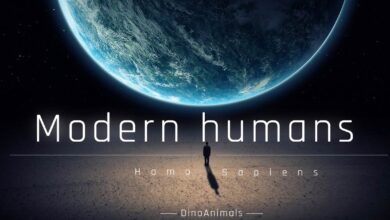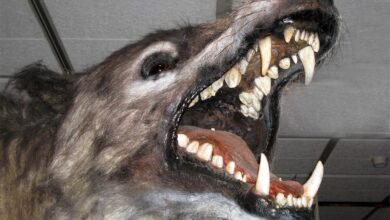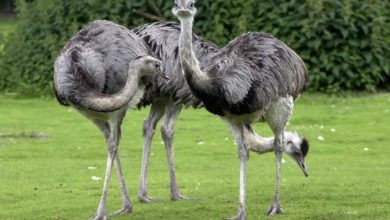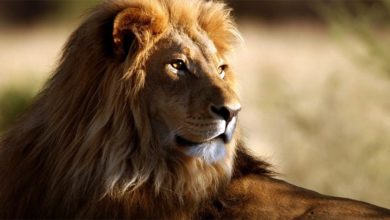The Grand Colorado Canyon
We will not find exploding geysers here, or bubbling hot lakes like in Yellowstone. Instead, we will see natural sculptures, enchanting with their harmony and grandeur. The warm brown-colored rocks look like huge terraces created only to be able to admire the vastness and size that is difficult to capture in photos.
Home for Indians
The Grand Canyon area was once also home to Indians. They created buildings that can still be admired and even visited today. They are an inseparable element of the Grand Canyon landscape and a reminder of the times when the man was able to live in harmony with the surrounding nature.

Location
Carved by the Colorado River, the Grand Canyon is located in the American state of Arizona – the southwestern region of the country. It is located in the Colorado Plateau, stretching from the state of Colorado through Arizona, Utah to New Mexico. The Grand Canyon is under the protection of the National Park, established in 1919.
Data
The Grand Canyon stretches for 446 km (277 miles), its width varies depending on the place – it ranges from 6.4 to 29 km (4 – 18 miles). The depth is as much as 1,857 m (6,093 feet).

The rise of the Grand Canyon
origins of the Grand Canyon may date back to 17 million years ago, although earlier estimates said that the formation of this phenomenal object began relatively “recently” – about 5-6 million years ago. Subsequent analyzes point to completely different values – research published in December 2012 in the journal Science suggested that the Grand Canyon was 70 million years old. However, this study has been criticized by a large number of scientists.
The Grand Canyon is a “by-product” of rock erosion, revealing the clearest history of the Earth. The layers of rock formed over millions of years are perfectly visible, thanks to which scientists can estimate the age of a given layer and the objects found there. The oldest layer of the Canyon is about 2 billion years old (the so-called Vishnu Basement Rocks), while the youngest is about 230 million years old (Kaibab Limestone) and forms characteristic cliffs.
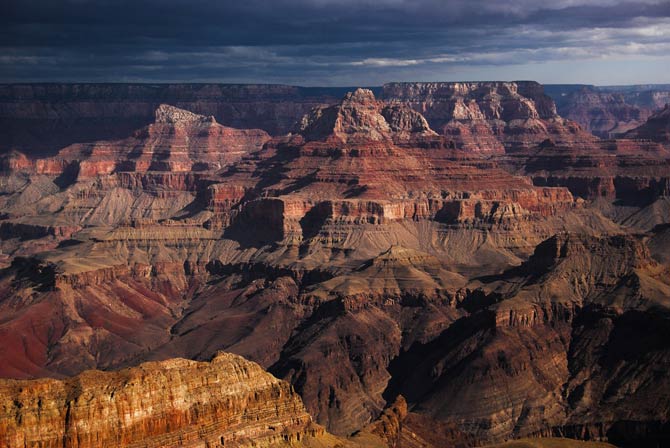
Establishment of the National Park
As we have already mentioned, the Grand Canyon National Park (GCNP) was established in 1919. However, its great natural value was mentioned 30 years earlier. And not just anyone talked about it, because the president of the United States, Theodore Roosevelt, who, after visiting the Grand Canyon, said with delight that this place fills him with admiration. He believed his beauty was beyond description. He called it a miracle of nature that must be protected so that future generations may also admire it. He also stated that every American should see the Canyon with his own eyes.
Original statement by Roosevelt: “The Grand Canyon fills me with awe. It is beyond comparison — beyond description; absolutely unparalleled through-out the wide world… Let this great wonder of nature remain as it now is. Do nothing to mar its grandeur, sublimity and loveliness. You cannot improve on it. But what you can do is to keep it for your children, your children’s children, and all who come after you, as the one great sight which every American should see.”
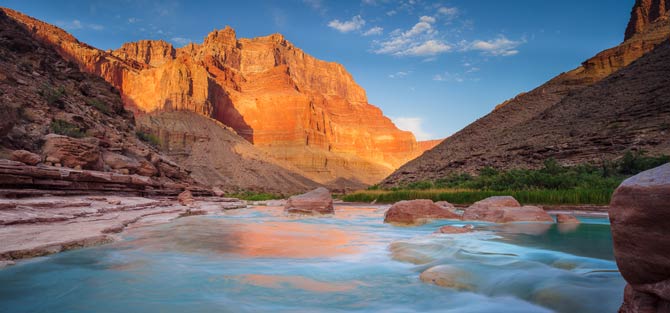
However, the great interest in nature conservation on the part of the 26th president of the USA and the admiration of the Grand Canyon did not help to create a national park right away.
The first project to establish the local National Park was created in 1882. If it had been decided then to create it, the Grand Canyon National Park would be the second national park right after Yellowstone. First, however, the Grand Canyon Preserve was created. In 1908, the Grand Canyon was awarded the status of a natural monument. At that time, however, there were still attempts to create a national park. After many unsuccessful attempts, in 1919, the twenty-eighth US president, Thomas Woodrow Wilson, finally signed a bill to create the Grand Canyon National Park.
The status of the National Park protected the Grand Canyon from building a dam on the Colorado River. Nevertheless, upstream of the river, the Glen Canyon Dam was later built.
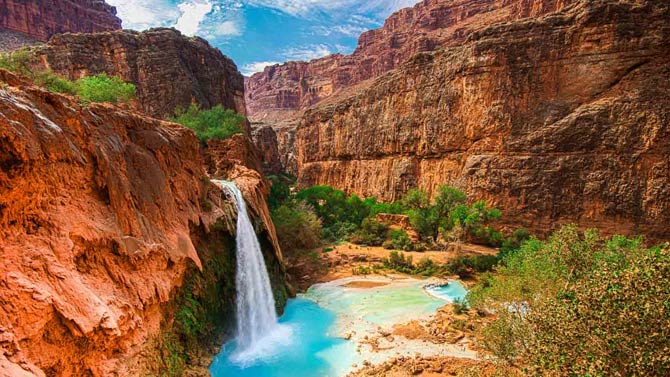
Climate
The aura changes depending on the altitude and season. In the highest parts, the Grand Canyon can be covered with snow, but in the lower parts, near the river, temperatures are similar to those in the Arizona deserts.
The climate is usually dry, and much of the rainfall occurs twice a year: in winter, during storms in the Pacific Ocean, and at the end of summer, due to the so-called North American monsoon, also bringing with it violent storms.
In summer, the average air temperature is over 100 °F (37.8 °C), while in winter it drops below 0 °F (-17 °C). Extreme temperatures are often a surprise to tourists who are unprepared for difficult weather conditions. Therefore, there are quite frequent cases of dehydration, sunburn or hypothermia. Before a trip to the Grand Canyon, it is worth checking the weather forecasts carefully to avoid unpleasant and even life-threatening situations on the spot.
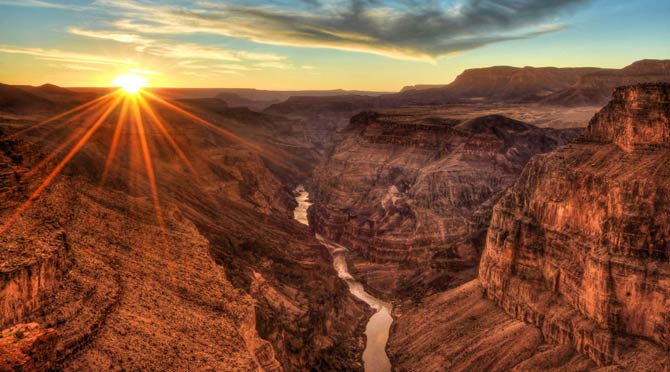
North and South Rim
The North Rim is an area within the Grand Canyon National Park for tourists. The North Rim seems to be a less frequented place than the South Rim because the former is wilder, smaller on the surface, and poorer in tourist centers. It is also less popular because the North Rim is further away from the main roads. With a little persistence and patience, however, we come across this place full of peace and quiet. North Rim is therefore an ideal stop for adventurers – travelers and backpackers, but also for pilgrims looking for tranquility.
In the South Rim area, you can admire the historic buildings of the Navajo Indians, which have been converted into various service facilities. There is also the Grand Canyon Village in the South Edge, where you can stay overnight, refuel, eat something, buy souvenirs, get medical help, go to church or hire a guide. The South Rim is crowded with tourists at the peak of the season, so it is not a very suitable place for people looking for solace and contact with nature.
However, we will experience unforgettable views on both Rims. This is guaranteed by various observation points secured with barriers. The most popular are: Toroweap Overlook (North Edge) and Mather Point (South Edge).
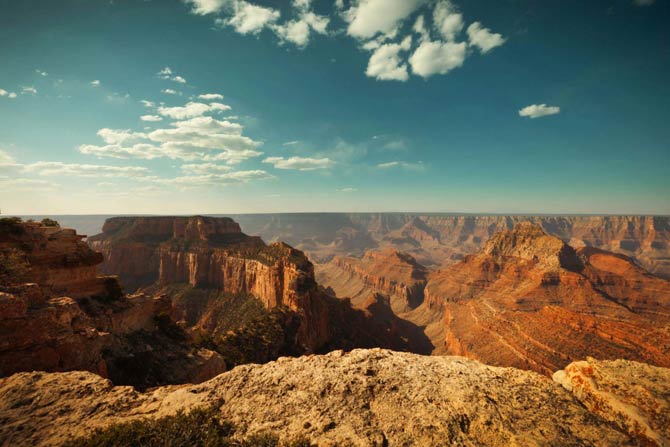
Flora and fauna
In the lower parts of the Canyon, i.e. from the river level to 1100 m (3,500 feet), we can find, among others, willows of the species Salix exigua, flowering shrubs of the species Baccharis salicifolia and asters of the species Pluchea sericea. The dominant plant is tamarisk.
The animals include amphibians: the tree frog of the species Hyla arenicolor and the toads of the species Anaxyrus woodhousi and Anaxyrus punctatus. There are 33 species of shellfish in the Colorado River. 48 species of birds nest regularly along the river. The most characteristic representative of the cluster is the American bald eagle.
Beavers swim in the Colorado River, muskrats are very rare, and Canadian otters disappeared from the Grand Canyon National Park at the end of the 20th century. In addition to numerous rodents and bats, you can see coyotes, skunks and ring-tailed cats here.

However, pumas, lynxes, gray fox, raccoons and weasels are rarely seen. The list also includes many species of insects, spiders and scorpions, 26 species of molluscs, including clams and snails. Among the reptiles, as many as 47 species can be mentioned, including rattlesnakes, iguanas of the genus Sauromalus and poisonous Arizona heloderma.
At the higher levels of the Canyon (from 1,100 to 2,100 m (3,500 to 7,000 feet) above sea level), there are coniferous forests alternating with clusters of mugwort shrubs. Agaves of the Agave utahensis species, various species of cacti, Senegalia greggii species and others are also visible.
Among the animals, let’s mention such hosts as: mule deers, black bears (baribals), elks, several species of squirrels or porcupines, and 30 species of birds, including: swifts, falcons and California condors in extreme danger of extinction.
At the highest levels (2500-2700 m / 8,200 – 9,000 feet ) we can find fir-spruce forests, grasses, yarrow, sedge, and asters. The local fauna includes: Abert’s squirrel, common hawk and cougar.

Detailed data / dimensions
The Grand Colorado Canyon
- Altitude: 2,700 m (9,000 feet) above sea level
- Floor elevation: 800 m (2,600 feet)
- Length: 446 km (277 miles)
- Width: 6.4 – 29 km (4 to 18 miles)
- Maximum depth: 1,857 m (6,093 feet)
- Records: one of the largest canyons in the world and the 2nd longest canyon in the world (the longest is the Grand Canyon Yarlung Tsangpo in Tibet)
- Establishment of the National Park: February 26, 1919
- Park area: over 4,926 km2 (1902mi²)
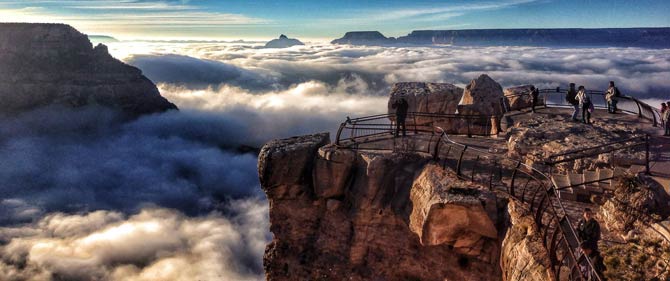
The Grand Canyon – interesting facts
- Record temperatures in the Grand Canyon were recorded on June 26, 1974 105 °F (41 °C) and on January 1, 1919, February 1, 1985, and December 23, 1990: −20 °F (−29 °C).
- In 2010, the Grand Canyon National Park was honored with its own coin as part of the “Beautiful America” series.
- There are no dinosaur skeletons in the Grand Canyon, as the rocks that make up the Grand Canyon are older than the oldest dinosaurs.
- There is a glass bridge in the Grand Canyon that is made for tourists.
- It took 3 to 6 million years to form the Grand Canyon by erosion.
Since there are hundreds of facts and curiosities related to the Grand Canyon, which cannot be included in one article, if you know something interesting, we invite you to add interesting facts in the comments below the article.









